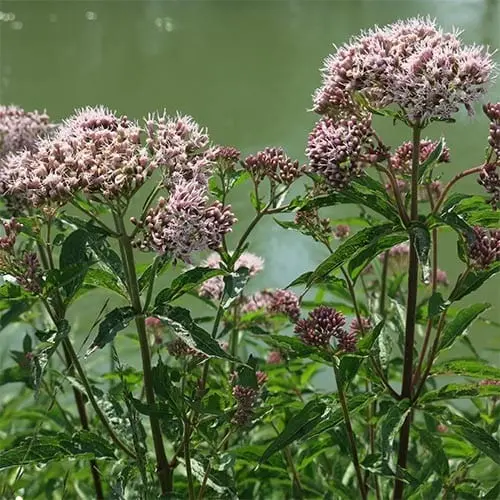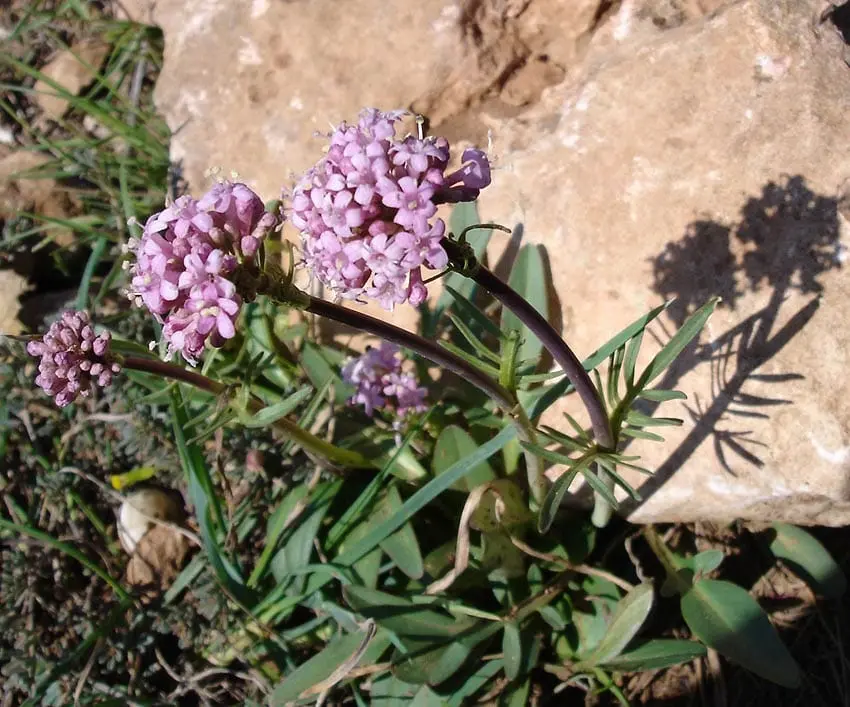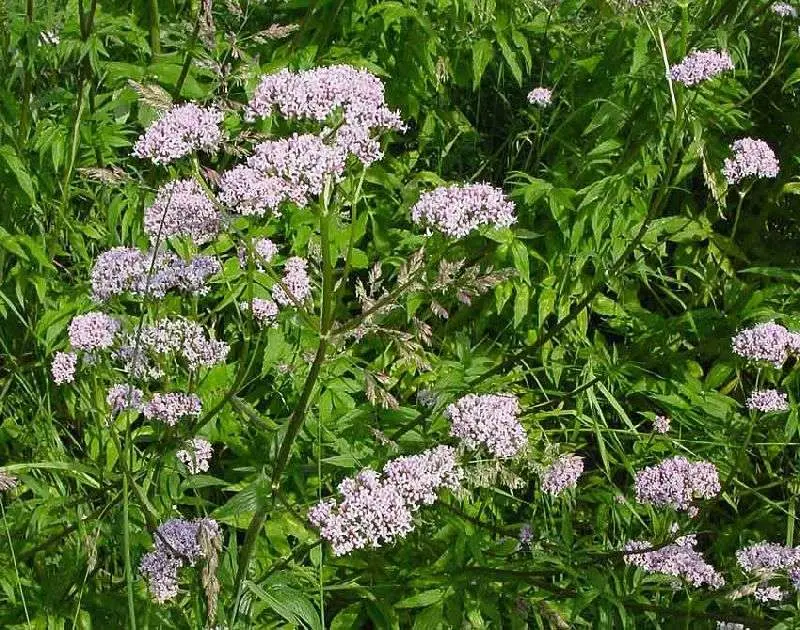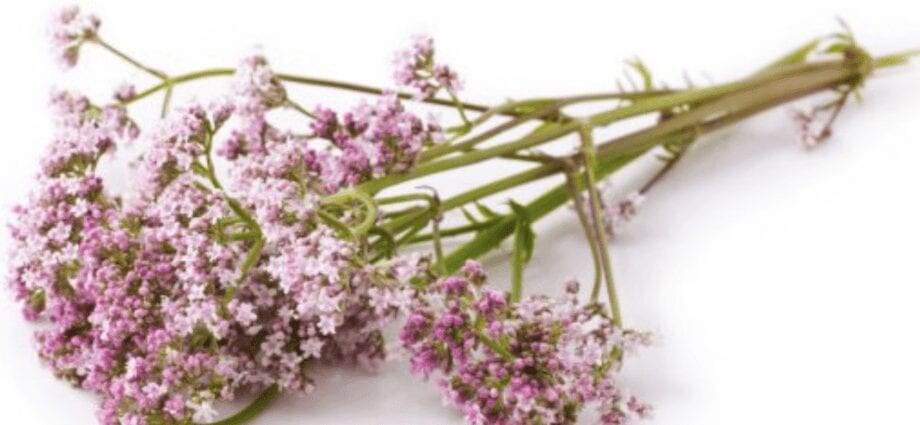Contents
Description
Valerian is a herbaceous perennial plant (biennial in cultivation) with a short vertical rhizome covered with numerous thin cord-like roots. Stems are erect, cylindrical, hollow inside; leaves are opposite, odd-pinnate, flowers are small, white or pink in color.
Maun grass, cat grass, cat root, buldyryan, averyan, marian, meow, earth or cat incense, deaf sickle, fever grass, full-time root.
SELF-TREATMENT MAY BE HAZARDOUS TO YOUR HEALTH. BEFORE USING ANY HERBS – GET CONSULTATION FROM A DOCTOR!
Composition
Rhizomes with valerian roots contain essential oil (0.5-2%), free isovaleric acid, borneol, borneol esters with acids (butyric, formic, acetic, etc.), terpenoids (camphene, limonene, myrtenol, pinene), actinidine alkaloid , glycoside valerid, tannins, sugars, valepotriates.

Valerian Pharmachologic effect
It has a calming effect on the central nervous system, improves the activity of the cardiovascular system, lowers blood pressure, has an antispasmodic and weak choleretic effect, enhances the secretion of the glands of the gastrointestinal tract.
General information
The genus Valerian belongs to the Honeysuckle family. It unites more than two hundred species, the most famous of which is Valerian officinalis.
Valerian officinalis grows on moist soils: the banks of rivers and lakes, flooded, swampy places, as well as on the edges of forests and mountain slopes. Growth area – Europe, in Ukraine – Zhytomyr, Chernihiv region.
Procurement of raw materials
The medicinal raw material is valerian root. Harvesting is carried out in late summer and early autumn (period from July to October), when the seeds have flown, and the stems remain recognizable and cannot be confused with other plants like valerian.

For harvesting, the roots of the plant are dug up and cleaned from the ground, washed with cold water. Then they are left to wither in the fresh air. After that, the roots of valerian are dried under a canopy. When using the dryer, the temperature should not exceed 35–40 ° С.
Finished raw materials are packed in paper bags, tight boxes or cans. Medicinal properties persist up to 3 years.
Healing properties of vleian
Historical reference
According to one version, the plant is named after Pliny Valerian, who tried to use it for the overwhelming majority of diseases. Before him, valerian was valued in Ancient Greece only as a perfume. After determining the therapeutic benefits, it became the main remedy for hysteria in Rome, Egypt, India.
Cleopatra considered the aerial part of valerian an aphrodisiac and placed it near the bed.
In the 18th century, Italian doctors recognized the benefits of valerian for the treatment of hysteria and epilepsy.

In Tibetan medicine, valerian rhizome with roots serves as a medicine for pneumonia, tuberculosis, neurasthenia, hemoptysis. In Korea, it is a remedy for toothache, removal of age spots and freckles, and strengthening of the gums. In Mongolia – antipyretic and pain reliever.
Action and application of valerian rhizomes
At the moment, in medical practice there is a description of the use of valerian medicinal rhizome with roots as a sedative, relieves the excitability of the cerebral cortex, reduces vegetative-vascular disorders of the drug.
Valerian inhibits oropharyngeal respiration, reduces smooth muscle spasm and arousal caused by caffeine. Improves functional mobility of cortical processes and coronary circulation, has an inhibitory effect on the medulla and medulla oblongata, enhances the effect of chlorpromazine and sleeping pills.
In England and Germany, rhizome with valerian roots is the official hypnotic. For the same purposes, it is used by 45.7% of US residents with sleep disorders.
Valerian stimulates the secretion of bile and the secretory function of the glandular apparatus of the gastrointestinal tract; regulates the work of the heart and vascular system, activates vasomotor centers, has a desensitizing effect, stabilizes vasodilating effects in angina pectoris.
Valerian is effective for weight loss and is used in the complex therapy of obesity. Serves as anorexigenic agent. Reduces appetite, suppresses hunger and soothes. During a diet, drink a glass of infusion before meals or replace it with a meal.

In official medicine, valerian rhizomes with roots are prescribed:
- with neuroses, hysteria, chronic functional disorders of the central nervous system, mental trauma, migraine, climacteric syndrome, insomnia;
- in case of violation of the coronary circulation, dysfunction of the first and second signal systems, heart neurosis, palpitations, extrasystole;
- when thyrotoxicosis, liver or biliary tract disease, impaired secretory function of the gastrointestinal tract, gastric neurosis, cardiac spasm, vitamin deficiency, diabetes insipidus are detected.
Valerian in folk medicine is additionally used for paralysis, rectal wounds, intoxication. It is used externally to improve vision (wash the eyes), as an antibacterial and anti-inflammatory agent for sore throat (gargle), treat lichen planus and epilepsy with baths, wash the head for headaches.
Valerian in cosmetology
Valerian helps to relieve skin sensitization, breakouts and redness. Improves complexion, reduces pallor.
The infusion is used for hair loss, dandruff, hair structure restoration, prevention of early gray hair.










